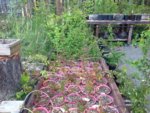mustt65
Sapling
hi all,
so i have a juniper that im air layering. there are already signs of roots so with winter coming the layer will be ready to chop and pot this coming spring. im looking to pot it in a colander and possibly in the ground aswell. i would like to hear some thoughts on colanders, what are some pros and cons. or is this something more for JBP? this here is the layer before it started rooting out.

so i have a juniper that im air layering. there are already signs of roots so with winter coming the layer will be ready to chop and pot this coming spring. im looking to pot it in a colander and possibly in the ground aswell. i would like to hear some thoughts on colanders, what are some pros and cons. or is this something more for JBP? this here is the layer before it started rooting out.

Last edited:



